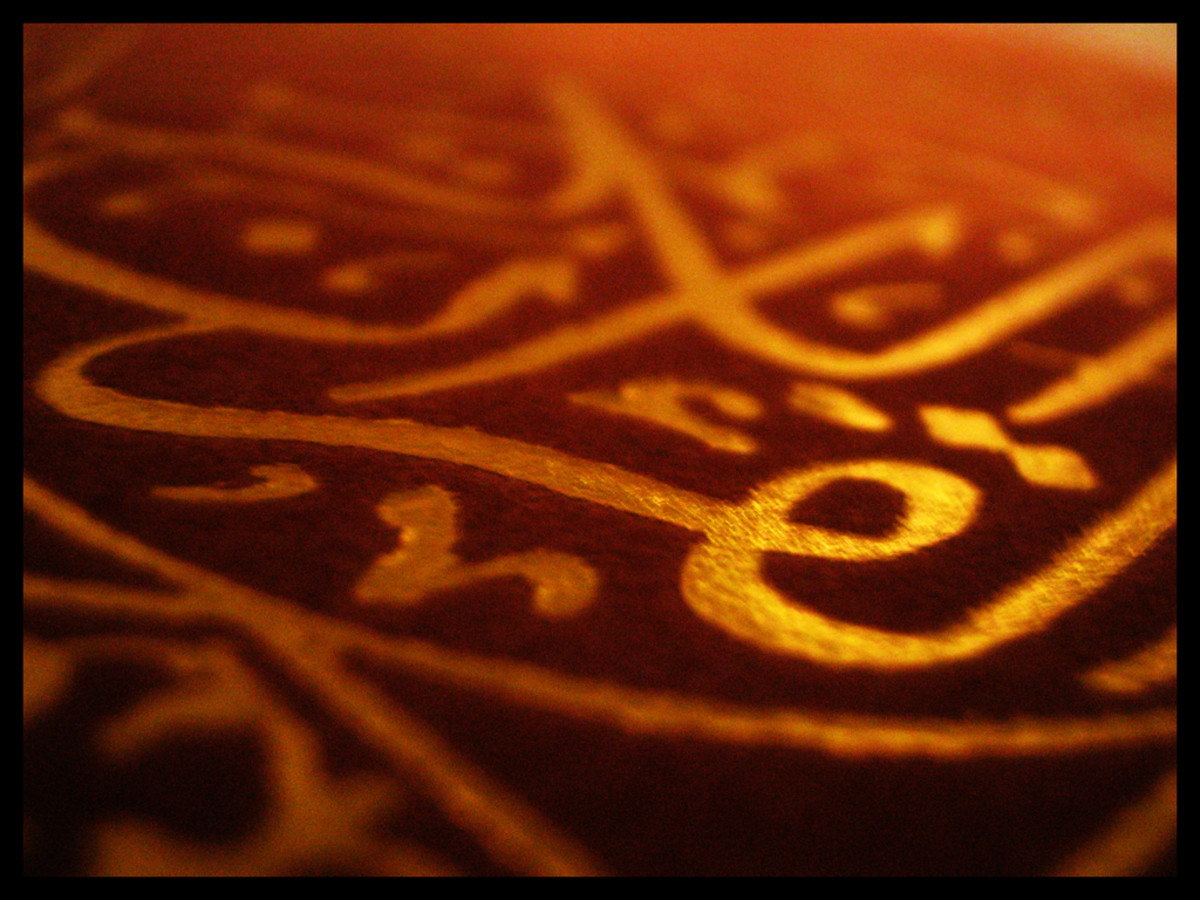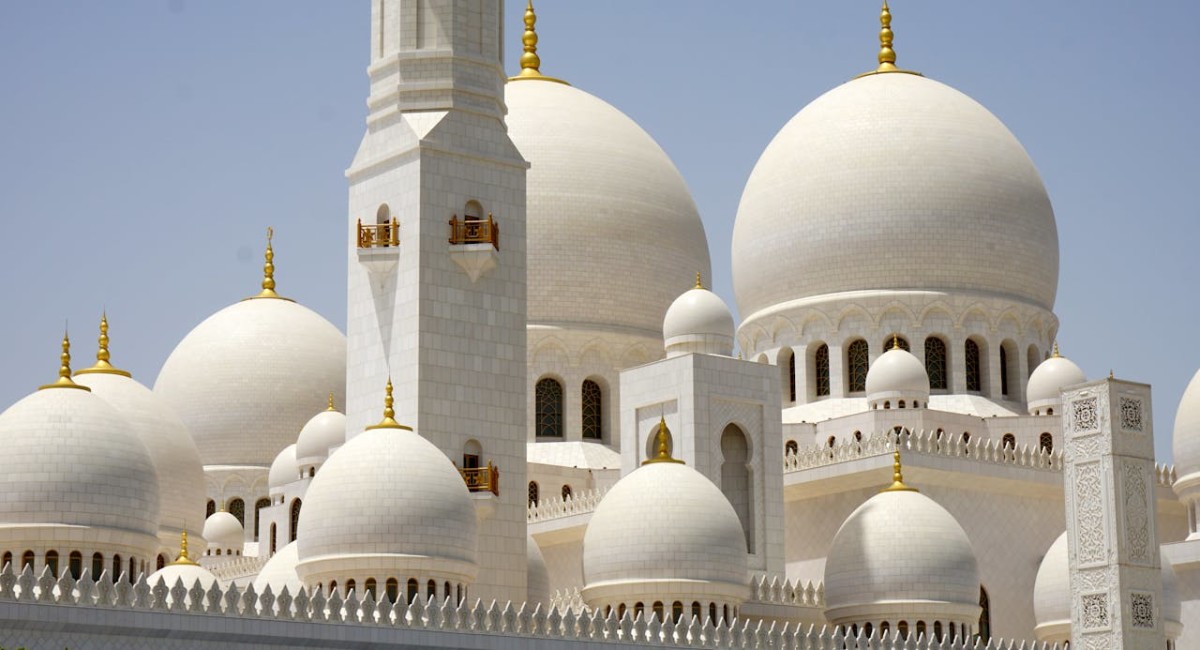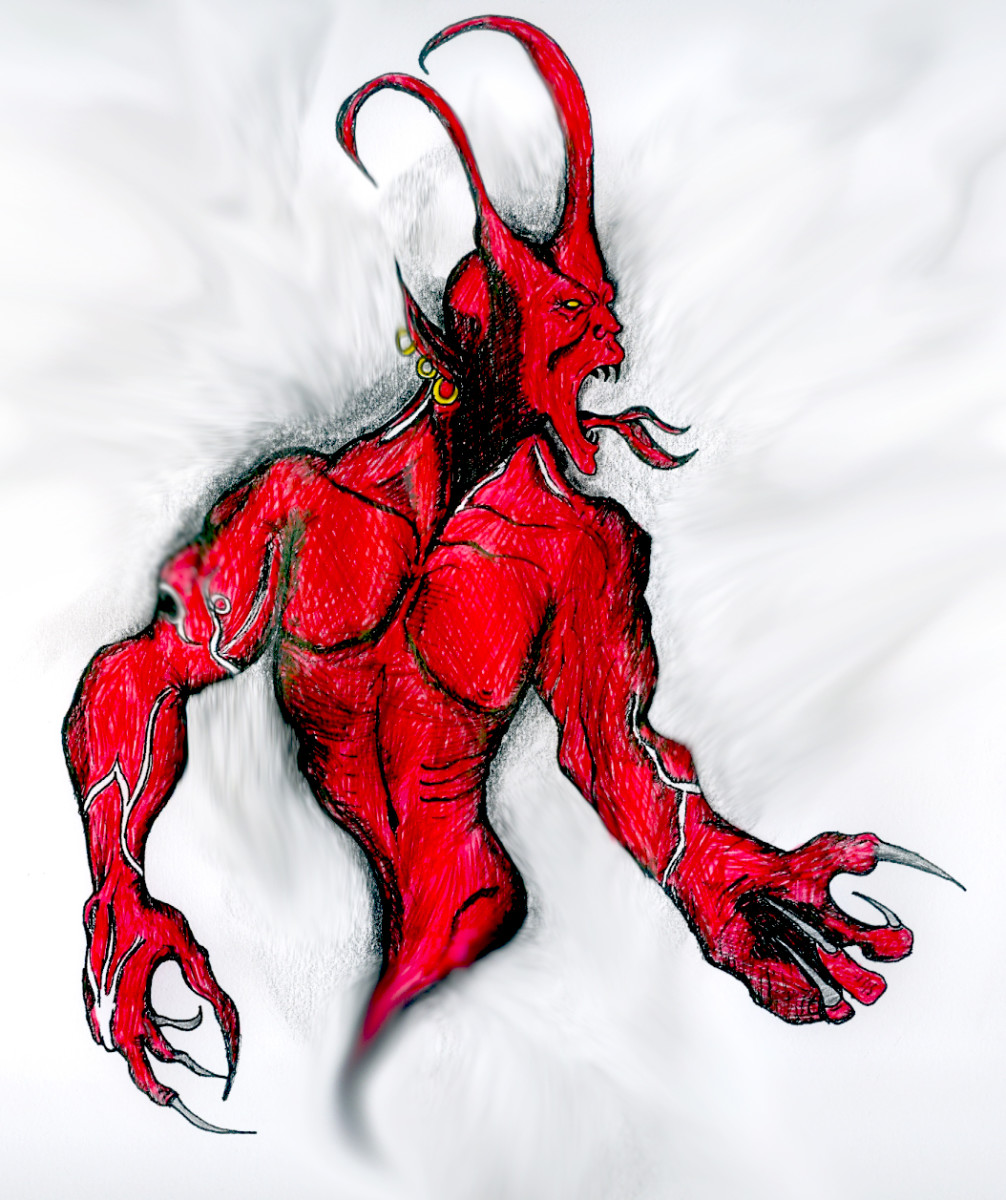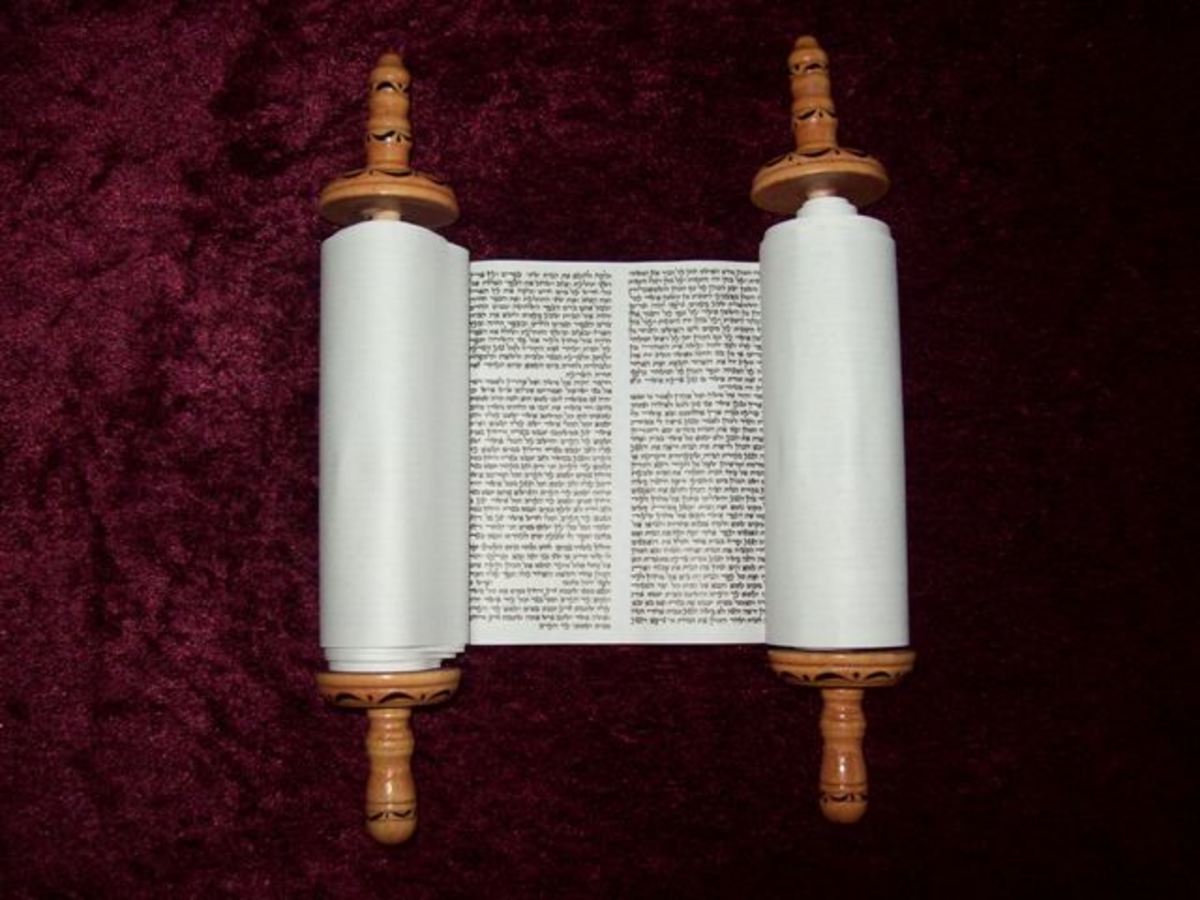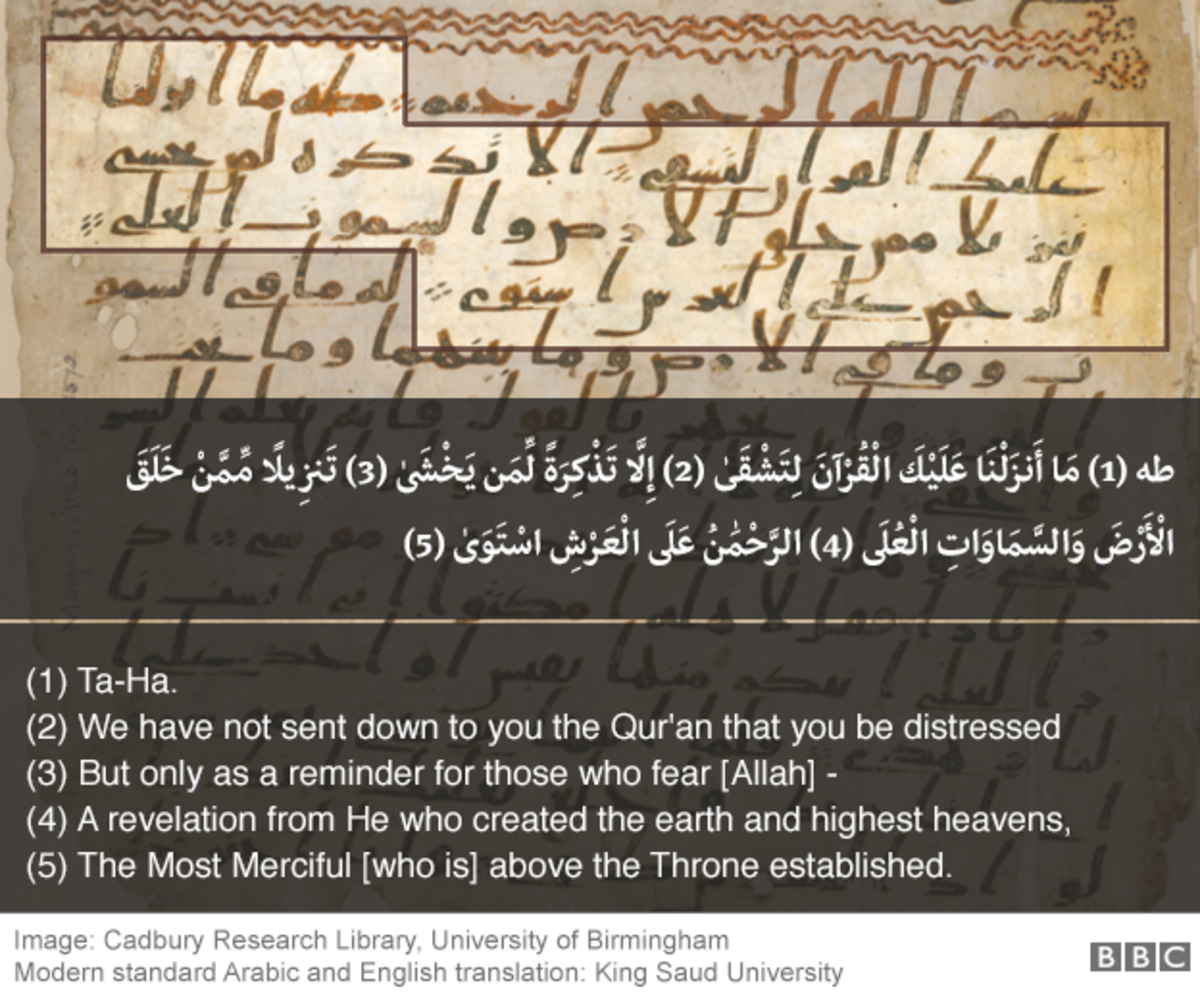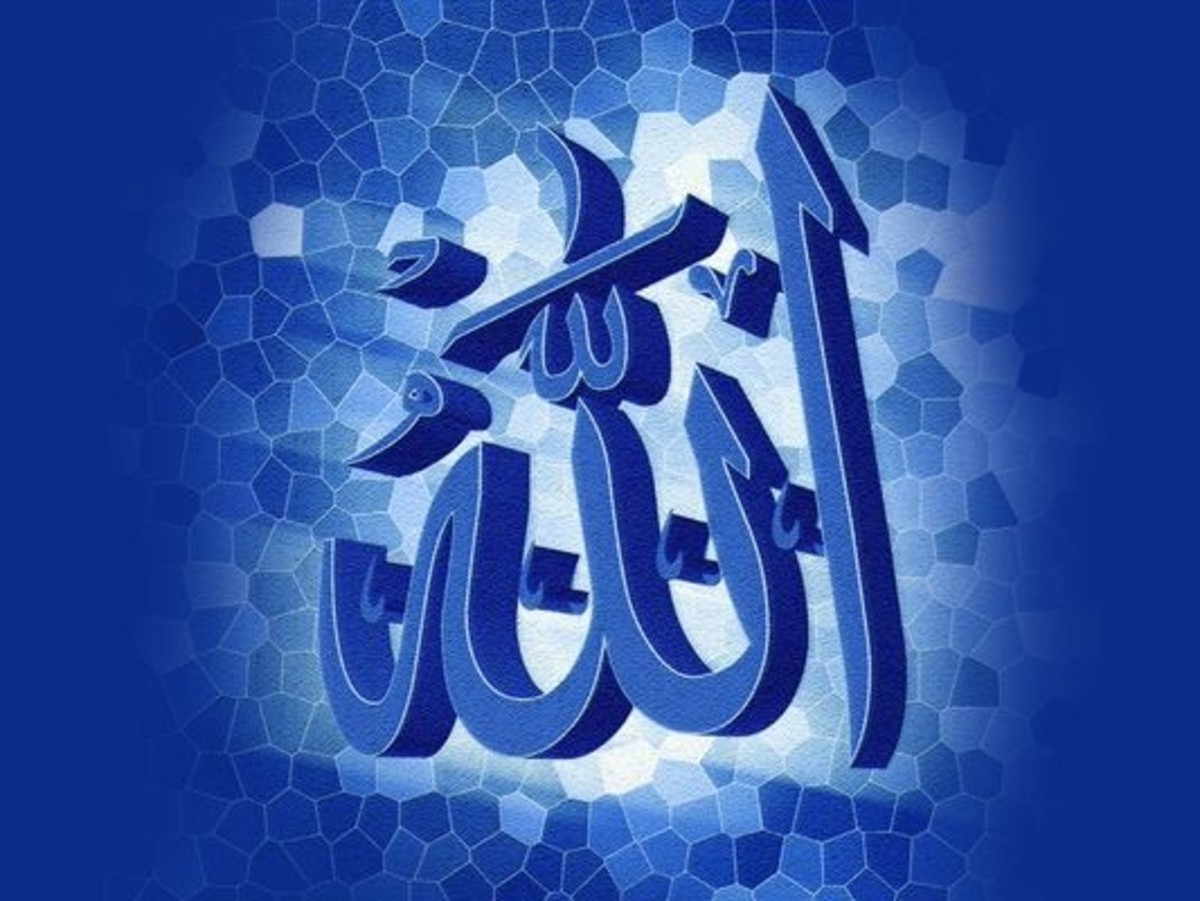The Origins Of Islam
The Star And Crescent

The Arabian Peninsula- The Heartland Of Islam
A Crash Course On Islam
More On The Origins Of Islam
Introduction
In the early 7th century the Byzantine and the Persian empires dominated the heartlands of the Old World. The Byzantine Empire was the Christian successor to the Roman Empire, its territories reaching from Constantinople to the Atlantic. Since the reign of Constantine the Great, Christianity had been the official religion. Paganism was a thing of the past.
The religion of the other great empire, Sassanid Persia, was a form of Zoroastrianism, an ancient and complex religious system that had a profound influence on both Judaism and early Christianity. Both Byzantium and Sassanid Persia were theocracies with hierarchically organised priesthoods. Zoroastrian Persia and Christian Byzantium were bitter enemies and, during the lifetime of the Prophet Muhammad, engaged in a long war that exhausted the resources of both.
The last area in the region with a significant pagan presence was the Arabian Peninsula. Arabia was a vast land of desert and steppe, three times the size of France. Its interior was terra incognita to the ancient world. Indeed, it was not precisely mapped until the 1950s. It was inhabited by Arabic speaking nomadic pastoralists who could survive in this hostile environment only by the presence of a few scattered oases and jealously protected wells. Without the camel, with its ability to travel long distances between water sources and to recycle desert shrubs and brackish water in the form of milk, these deserts would have been impassable.
Yemen, the Arabia Felix of the classical world, received the tail end of the monsoon rains and could therefore support agriculture. This mountainous land had been home to highly developed civilisations dating back to at least the early 2nd millennium BC. These civilisations, speaking languages closely related to Arabic and with their own writing system, developed ingenious irrigation systems based on catchment dams that stored seasonal rainfall. The last of these civilisations, that of Himyar, came to an end shortly before the rise of Islam. Christianity had penetrated here, and at the time of the Prophet Muhammad there was a bishopric at Najran, not far south of Mecca. Across the Red Sea was another Christian kingdom, Ethiopia, which, according to Arab tradition, invaded Yemen in 570 and then attempted to attack Mecca. Arabian tribes in the north, close to the Byzantine border, had been influenced by both Christianity and Judaism, and some pre-Islamic tribal poets, whose verses were later collected from the oral tradition, were avowedly Jewish or Christian. Central and western Arabia, however, were still pagan. Yet even here there were small islands of monotheism. One was Yathrib, later called Medina, which was inhabited by Jewish tribes, though what form of Judaism they professed is unknown.
Images Of Mecca

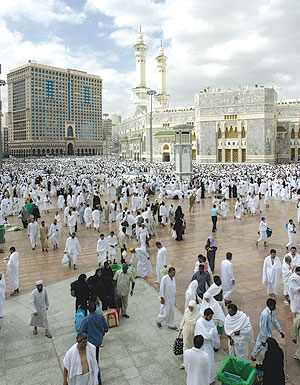
Mecca
Mecca was a pagan cult centre to which surrounding tribes made pilgrimage during stipulated months of the year in which a truce was observed, guaranteed by the ruling oligarchy, the tribe of Quraysh. The object of pilgrimage was the Ka’ba, a square edifice built of black stone with an inner chamber containing images of pre-Islamic deities. It occupied the centre of a taboo precinct, called the haram, in which it was forbidden to spill blood or even to pluck a blade of grass during the pilgrimage season. Near the Ka’ba were various sites associated with the events in the life of Abraham (Ibrahim). According to the Koran, Abraham originally built the Ka’ba to honour the One God, calling it the House of God, bayt Allah, and it was there that he offered to sacrifice his son in obedience to God’s command. As time went on, polytheism once more took hold and idols were introduced into the Ka’ba.
Mecca lay just west of the ancient Incense Road from Yemen and south Arabia to Palestine and Syria. By the late 6th century the collapse of the irrigation system in Yemen and wars between Persia and Byzantium had probably reduced the trade in frankincense and myrrh to a trickle. They are scarcely mentioned in early Islamic tradition. Mecca nevertheless traded with the frontier cities of Byzantium and Persia, and this trade was significant enough to create a comparatively wealthy class in Mecca. This class was composed of the leading clans of the tribe of Quraysh.
Where Is Mecca?
Muhammad In Written Form
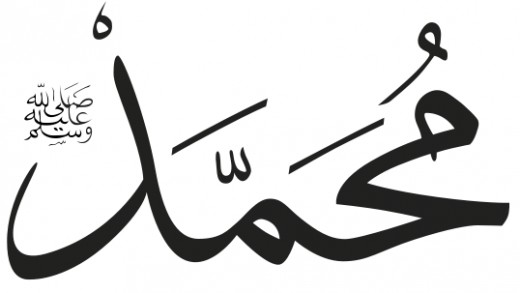
A Sacred Cave
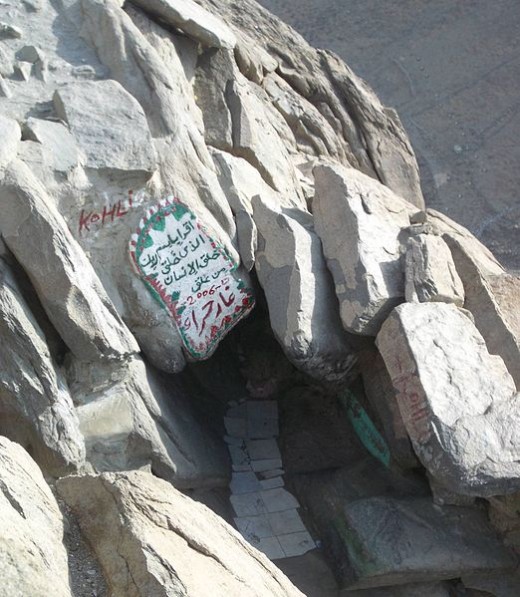
A Highly Recommended Link
- Muhammad: The Warrior Prophet
A look at the life of Muhammad, a man who ultimately became both a prophet and a warrior.
More On Muhammad
Muhammad
In 570, a man called Muhammad was born in Mecca. His family business was the transportation of goods such as salt, gold, ivory and slaves using horses and camels. As a youth he gained a reputation for honesty and wisdom. It’s said that he successfully resolved a heated dispute during the reconstruction of the Ka’ba after it had been damaged by flash floods. The four chief clans of Mecca couldn't decide which of them should have the honour of lifting the sacred cornerstone into place. It was resolved to let the next person who walked into the shrine to make the decision- that person so happened to be Muhammad. Mirroring the wisdom of King Solomon, he took off his cloak, placed the stone into the middle and instructed the leaders of the clans to lift it into place jointly by taking one corner of the cloak each.
Muhammad was a profoundly unsettled man. Perhaps it was because he never knew his father, Abdullah, who died on a trading trip six months before he was born. Perhaps it was because he lost his mother, Amina who died of an illness when he was only six. Maybe life as a merchant disillusioned him. Despite what was by all reports a happy marriage, at the age of about forty he withdrew from everyday life to a small cave on Mount Hira, near where he lived. There he had the first in a long series of dramatic and vivid visions in which the Archangel Gabriel- the same angel who is said to have visited Abraham and Mary, Jesus’ mother- revealed to him the final and absolute word of God.
The angel told Muhammad that there was only one God, not many, and that he was in heaven, not on earth. He said that God had revealed his word many times before through prophets such as Adam, Abraham, Moses, Jacob, Joseph, Elijah, Jesus and more than fifty others, but over time, partly by accident but sometimes through deception, humans had corrupted his word and leaped to false assumptions. In so doing they had constructed religions such as Judaism and Christianity, which, although based on the truth of there being only one God, had become misguided and false.
It was a mistake, said the angel, for the Jews to think they were God’s only chosen people. The Arabs were also descended from Abraham- not, like the Jews, through his second son Isaac, but through his elder son Ishmael. Christians were mistaken when they claimed that Jesus was the son of God, because God is divine and cannot be made flesh. Rather, God spoke through prophets, finishing with Muhammad, who was the last prophet. Nor will there be a second coming, when Jesus or any other Messiah (meaning a saviour or liberator of the world) comes to earth in judgement. Basically, there is only one God, Allah, the God in heaven, and he is the only judge.
Muhammad’s visions also provided the foundations for a code that defines the Islamic way of life. The Five Pillars of Islam are a simple but powerful creed; profess faith in Allah as the one and only true God (and to Muhammad as his messenger); pray to Allah five times a day; give generously to the poor; observe all religious festivals; and, finally, make a pilgrimage to Mecca at least once in your lifetime.
The Spread Of Islam

A Full Length Documentary On The Spread Of Islam
Another Highly Recommended Link
- Muslim Invasions: The Battle Of Tours
A hub that I wrote that explores when Islamic forces came within a whisker of conquering Europe.
More On The Spread Of Islam
Islam After Muhammad
Within just a hundred years of Muhammad’s death in 632, Islam had spread like wildfire. Its simple, but powerful message had penetrated Egypt, Palestine, Syria and the rest of the Middle East. It spread to Persia, toppling the Sassanid Empire in 651, extending its reach as far as the Black Sea coast to the north and modern day Pakistan to the south. By 711 Muslim warriors had crossed North Africa and moved into southern Spain, and within five years had captured the entire Iberian Peninsula as far north as the Pyrenees. By 732 they were near Tours, in the heart of France, only to be stopped by a miraculous victory, against all odds, by the Frankish ruler Charles Martel. Some historians believe that had Charles not won this battle, Europe might well have become Islamic.
Meanwhile, at the other end of the Islamic world, in Central Asia, a new Islamic dynasty called the Abbasids defeated the Chinese at the Battle of Talas in 751, securing control of the area as far north as the Aral Sea. This Arab victory introduced Islam into inner and Central Asia, where it has remained ever since. Within 150 years of Muhammad’s death, Islam was the largest and fastest growing religion in the world.
Muhammad’s death signalled the beginning of a series of disputes as to who should lead the Muslim community. Since he had no agreed heir, a split emerged that still exists to this day. Sunni Muslims believe that Muhammad passed on his estate, and therefore his authority, to the Muslim community around him. It was with their approval that Muhammad’s close friend and ally Abu Bakr legitimised his claim to become the first Islamic Caliph, Muhammad’s rightful successor. However, Shia Muslims believe Abu Bakr orchestrated a coup d’état, and that Muhammad’s cousin and son in law Ali, who later became the fourth Caliph, was the Prophet’s true heir, owing to his blood relationship. Ever since, Sunni Muslim rulers have claimed their authority from the election or approval of senior Islamic representatives, while Shias believe political and religious legitimacy comes through direct descent from Muhammad and his family.
Rivalries burst into bitter struggles that exploded in a series of Muslim civil wars called fitna, shot through with coups and assassinations. Such rivalries helped spread the new word of God faster and farther. From out of Arabia came men highly charged with political ambition who scattered in all directions on horses and camels, spreading the word of Allah using whichever version of Muhammad’s rightful inheritance suited their own particular claims.
This voluntary and mostly permanent conversion of millions of people to the new faith of Islam had dramatic consequences for the relationship between mankind and the natural world. At the heart of the religious philosophy of Muhammad was the complete removal of any concept of God on earth. The only earthly link with divinity was through the immutable, inspired written word of the Koran. Forests, animals, plants, mountains- dreamtime- none was a focus of Islamic veneration. Even the weather, thunder, lightning and other forces of nature were not considered sacred in themselves. Putting a single God in heaven, not on earth, was a trend started by the Jews. Then, barring the temporary exception of Jesus, Christianity reinforced the idea. Now the process was perfected by Islam. God was not to be found in the druidic woods of Europe or in Poseidon’s stormy seas, not even in the pyramids of Egypt or on top of the ziggurats of Babylon. God was to be known on earth only through a single set of perfect and immutable rules uttered by Muhammad and later written down by his followers in their holy book.
Today Islam is second only to Christianity (2.1 billion) in terms of popularity; it’s thought more than 1.3 billion human beings today identify themselves as practising Muslims. That’s roughly 20% of the world’s population and that figure continues to increase.




